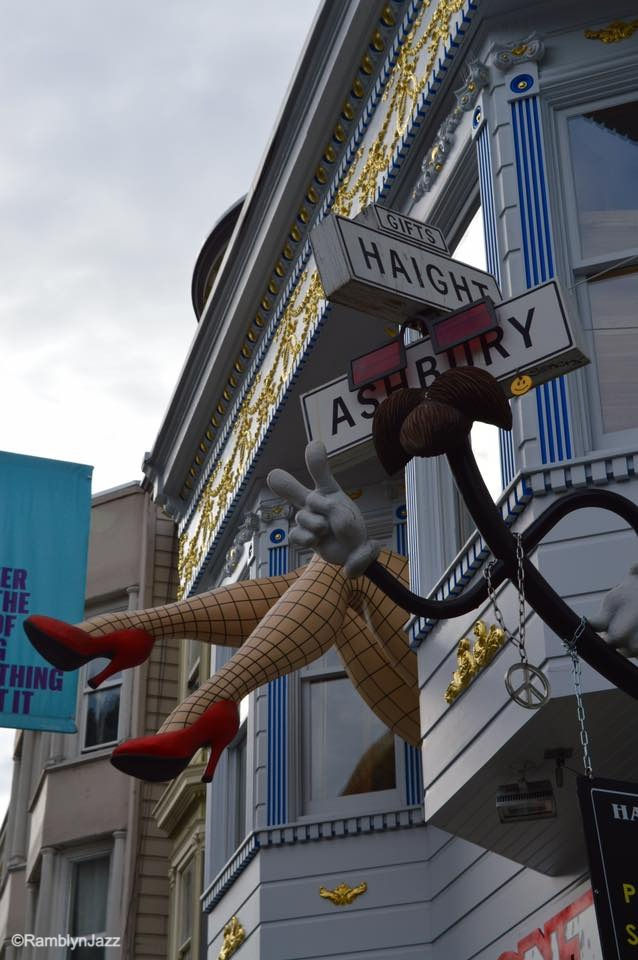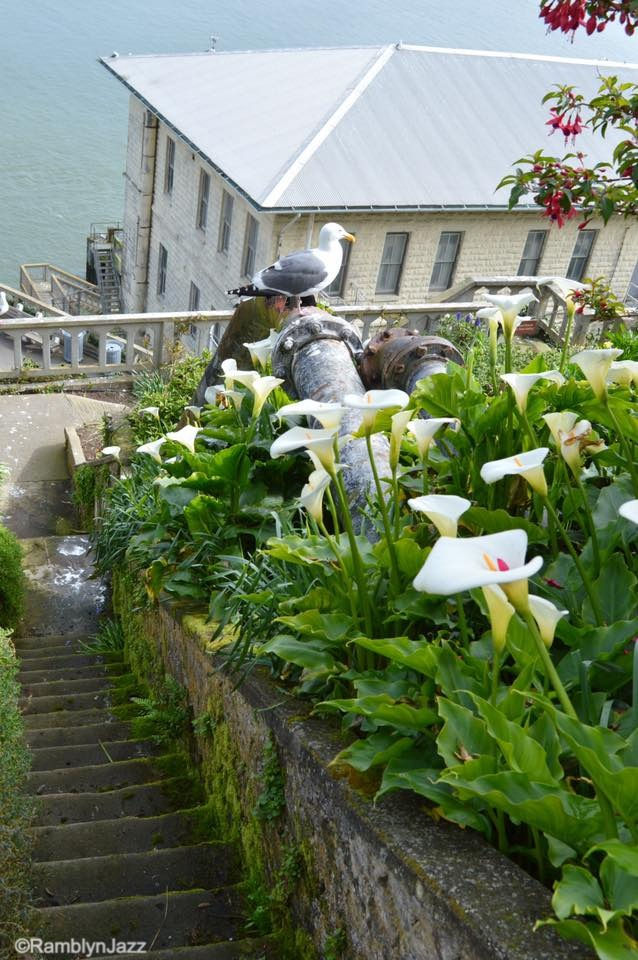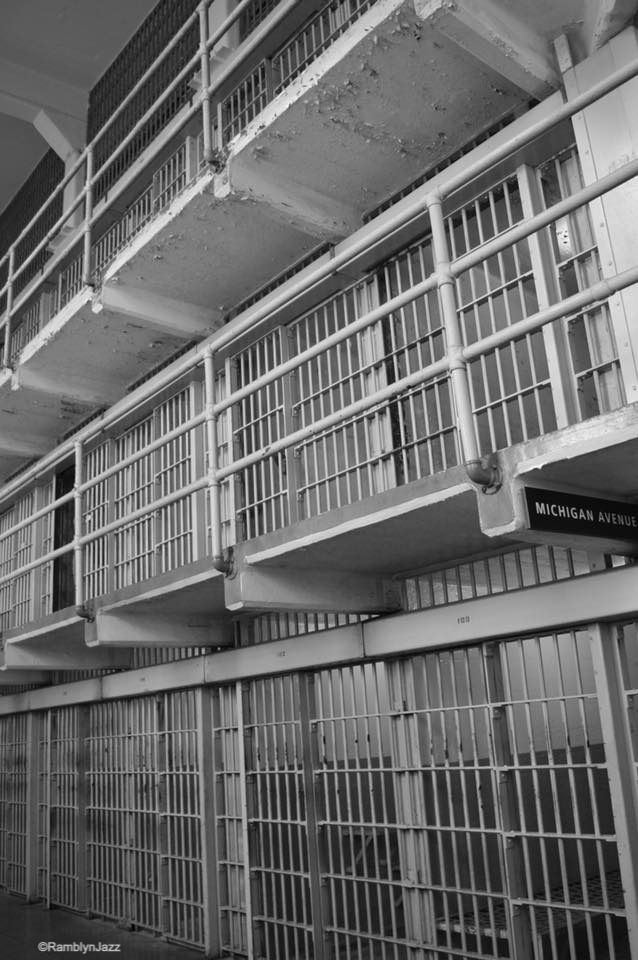San Francisco for the Budget Traveller
- Lyn (aka Jazz)

- Oct 3, 2022
- 10 min read
Updated: Dec 23, 2022
San Francisco is an amazing California city to explore. It's home to hippies, hipsters, techies, yuppies, immigrants, and business people. It has one of the oldest gay scenes in the US, Alcatraz Island, an amazing Chinatown, incredible food and the famous big red bridge. It's a great city to visit with a fabulous mix of things to do for every type of traveller. It has been a favourite early Spring getaway for me over the years when I'm fed up with the dreary rain in Vancouver and am looking for a quick break and (slightly) better weather than I am experiencing at home.

San Francisco has several unique miro-climates. Temperatures may rise or fall from one street to the next. On the same day, one hill can be cold and foggy, the next hill is clear and sunny. Views of the Golden Gate Bridge can be partially or fully obscured by fog or may be beautifully clear. Sunny San Francisco is an absolute joy. Foggy, wet and chilly San Francisco is also a delight. Plan to wear layers and comfortable shoes.
Each neighbourhood has its own charm and personality and each begs to be explored. Getting around on foot is fairly easy (although there are plenty of hills) but there is a decent public transportation system including metro, busses, street cars, cable cars, taxis, and ride-sharing. Hop On Hop Off Tour
I'm a big fan of hop-on hop-off tours for my first visit to a new city. It's a great way to get a feel for the city, to learn a bit of history and culture, and it helps me to decide which places I want to explore more fully. There are multiple companies that offer tours, take your time to research which offers stops at the sites you most want to see. The Big Bus Day Tour is the most popular. The Painted Ladies In American architecture, Painted Ladies, are Victorian and Edwardian homes and buildings that were repainted during the 1960s in three or more colours. There are many located around the city, the most famous group of these is a row of Victorian houses on Steiner Street. Also known as "Postcard Row" or the "Seven Sisters", these houses were built between 1892 and 1986.

The Ferry Building A great place to eat is the 1898 Ferry Building Marketplace, located along the Embarcadero at the foot of Market Street. . Outside the building on weekdays are many food stalls. On the weekend, a big farmers market is set up outside. Inside you will find restaurants and food vendors selling specialty food items including butchers, cheese mongers, and wine bars. Opening hours are weekdays 10am -7pm, Saturdays 8am - 6pm, and Sundays 11am - 5pm.

Embarcadero After grabbing a coffee and a breakfast treat, wander along Embarcadero. The Embarcadero is along the city's eastern shoreline where several waterfront attractions are located. On a series of numbered piers visitors will be able to catch ferries, pick up hop-on hop-off tours, see science exhibits at the Exploratorium, and discover many restaurants. On a sunny day, it's a pleasant walk to Fisherman's Wharf.

A favourite stop along the way is the Pier 23 Café & Bar for a bowl of chowder, a cold beverage, and a great view of the bay in a convivial atmosphere.

Fisherman's Wharf - Pier 39 - Ghiradhelli
This area covers multiple blocks along the waterfront and is the tourism center for most visitors. If you aren't into walking, or it's a damp day, the best way to reach Fisherman's Wharf is to take the F-Line streetcars running along Market Street from the Castro neighbourhood or one of the cable car lines: the Powell-Hyde line (Hyde & Beech Street) or the Powell-Mason line (Taylor & Bay Street)

At Fisherman's Wharf, you'll find street performers, souvenir shops, carnival rides and many expensive restaurants. It's an excellent place to wander and people-watch.


Sea lions flock to Pier 39 at Fisherman's Wharf where they lounge and make an incredible noise right on the wharf. Sea lions are very common where I live but this is a highlight for visitors who don't get a chance to see marine life regularly.

I can't imagine visiting San Francisco without taking a stop at Ghirardelli Square to pick up some chocolate and some delicious ice-cream. Ghirardelli makes some of the best desserts, guaranteed to put you into a dreamy chocolate haze.

Golden Gate Bridge The iconic Golden Gate Bridge is one of San Francisco's most famous landmarks and is also a piece of engineering art. You can walk across the bridge (highly recommended) or take a hop on hop off tour that will take you across. I was surprised to learn that most of the Bay is an average of only 15 feet deep. Every large marine vessel needs to be escorted through the dredged channels by pilots.

Every day (and even throughout the day) the view of the bridge is different. Sometimes it will be completely obscured by fog, sometimes just the top is behind the fog, and on clear days you will be treated by a full view.

Enjoy the Golden Gate National Recreation Area with its waterfront promenade, fantastic views of the bridge and some walking trails. There is even a Walt Disney museum in the park. The Recreation area includes many unique sites in three different counties: San Francisco, Marin, and San Mateo. Crissy Field
Also near the bridge, as you walk along the harbour toward the center of town is Crissy Field Park, which features a beautiful beach, restaurants, piers for fishing, and locals playing frisbee and volleyball, running, walking their dogs, or lying on the beach. I enjoy the broad views of the harbour and bridge.

Golden Gate Park This gigantic park features a Japanese garden, a Chinese pavilion a museum, an arboretum, a bison herd, and tons of hiking and walking trails. Walking from end to end will take at least half a day and if you are a meanderer like me it will take much, much longer. If that’s too much for you, spend at least a few hours here exploring the park, especially if it’s one of those warm and beautiful San Francisco days. On my last visit, I decided to visit on No-Drive Sunday. I arrived at the Park to enjoy "Lindy Hop" Sunday which included some fun dancing on the street.

A favourite stop for me is the Conservatory of Flowers, a Victorian Glass Conservatory. It was completed in 1879 and is the oldest building in the park. It houses a collection of rare and exotic plants and even has a small butterfly exhibit.

I also enjoy wandering the trails around the small lakes. I have always found the trails to be lightly used and very peaceful.


The Chinese Pavilion is surrounded by beautiful plantings. This pavilion was a gift to San Francisco from sister city Taipei, Taiwan and was dedicated in 1981.

The Japanese Tea Garden is a real treat and includes a tea shop and a gift shop. There is a fee to enter ($13 - 25). The tea shop offers Japanese snack foods, teas and soups.

The bison is an important animal in North American history. When the park was built in the late 1800s, the bison population was about 1,000 but was soon driven to the brink of extinction. The theme of the park was intended to celebrate the American West so bison were brought to the park in 1891.
The bison currently living in the pen in Golden Gate Park are not descended from the original animals brought to the park. Those bison were replaced by a younger herd in 1984 and again in 2011. In March 2020, five new bison calves were added to the surviving 2011 herd. Today, all the bison in the paddock are female.

Haight-Ashbury
The Haight was the center and birthplace of America's counterculture movement during the Summer of Love. Hippies used to live here but now the colourful Victorian homes are owned by those with much thicker wallets.

Head shops and consignment shops have been replaced by high-end boutiques, chic restaurants, and hip cafés but it still holds on to some of the vibe, especially seen in the colourful murals, store fronts, and signs. An excellent, in-depth walking tour is offered by Flower Power Walking Tours ($20 per person).

Take time to explore and enjoy the street art surrounding you. Check out the vintage and costume stores.


Palace of Fine Arts The Palace of Fine Arts is a faux Roman-style remnant of the 1915 Panama-Pacific International Exposition. The exhibition celebrated both the completion of the Panama Canal and the rebuilding of San Francisco, after the devastating earthquake and fire of 1906. The outdoor rotunda and its lagoon are one of the city’s most photographed sights. There is a constantly changing schedule of events, so check the website to see what’s going on. It's closed on Mondays but the outdoor areas can always be explored.


Take a leisurely stroll around the lagoon and do some bird-watching. There are several different heron species including the Green Heron, Night Heron, and Great Blue Herons. Birds are my nerdy pleasure. I am always happy if I can spend time watching and photographing them.


The Palace is described as "a fictional ruin of an imaginary place". It wasn't meant to last, but the local citizens have always mounted a conservation effort whenever the site has been endangered. It has been extensively rebuilt over the years. The Palace was used mainly as an art gallery during the exhibition but over the years, it has been used for a variety of purposes, including vehicle storage, offices, and parking. Its function today is as an event venue.

More than half of the statues in the Panama-Pacific and New York World Exhibitions used the same model, Audrey Munson. Audrey lived a tragic life. She had fame, notoriety, scandal, crime, and destitution. She spent 65 years in an insane asylum before her eventual death at 104 years of age. (Dr Who fans will understand why I didn't blink).


Beat Museum A fun way to spend some time on a rainy day is a visit to The Beat Museum dedicated to the Beat Generation values of tolerance, compassion, and having the courage to live one's individual truth. The Beats (beaten down) were a collective of writers, artists, and philosophers who lived in San Francisco in the 1950s. The museum includes original manuscripts, rare books, letters, and other interesting artifacts from authors including Jack Kerouac and Allen Ginsberg ($8, open daily) The museum is in the North Beach neighbourhood which was where the Beats lived. My visit inspired me to spend the next 6 months devouring any beat writings I could find.

Alcatraz
The former federal prison on Alcatraz Island was where some of the worst criminals in the USA were incarcerated. It was shut down in the 1970s and is now a national landmark. The rangers offer a tour that takes visitors around prison and tells stories of the daily lives of the prisoners and staff and the workings of the prison. This is very popular with visitors year-round, I suggest booking the earliest ferry ($38) to the island to avoid crowds. Ferries depart from Pier 33, about 1.5 km from the Ferry Building.

Many of the guards and prison staff lived on the island with their families. The tour begins on the dock below the former staff apartments and the ruins of the Warden's home.


On the staff side of the island, gardens were planted originally by the families but later, privileged prisoners also tended the gardens. There is no natural vegetation on the island. Everything was planted. Nowadays the gardens are looked after by volunteers.

Inside the prison, there are several large cell blocks, isolation cells, guard rooms, and a large dining hall.


One exhibit shows how one set of escapees managed to leave. They used spoons to dig through cement vent hole. Next, they made model heads out of soap and hair which were tucked inside the covers after dark. From inside the walls, they scaled up pipes to the roof.

In 1969, Native Americans and their supporters occupied Alcatraz Island for 19 months to bring attention to past injustices and modern Native concerns. This demonstration began a new political movement known as "Red Power" and led to more than 25 pieces of legislation and court decisions enhancing autonomy and sovereign powers of the native nations of the USA. Signs of the protest remain and there is an exhibit dedicated to the uprising.



(look closely at the stripes)
Cable Car Riding a cable car in San Francisco is like taking a gondola ride in Venice. You know the locals don't travel this way but it really doesn't matter, you're still going to do it. Having said that, riding cable cars is an excellent, if expensive, way to tour the city, experience various neighbourhoods in San Francisco and save yourself some walking. A one-way ticket is $7 (you can pay the conductor onboard mid route). If you have a CityPASS, cable car rides are included.

One cable car roundabout is at Market Street. There can be a line-up on busy days but you'll have time to watch the workers manually turn the car around and you are likely to enjoy a performance from one of the many buskers in the area. The route will take you to the top of Lombard Street and onto Chinatown.

Lombard Street Lombard Street is the crookedest street in the world. It's very pretty but I would hate to live there with all the tourists walking and driving the route constantly and with little space between the front door and the sidewalk.

During the 1920s as car travel was just beginning, many of San Francisco's hills were too steep. A local man proposed using curved streets to gradually move vehicles downhill through a series of tight turns. Engineer Clyde Healy applied the idea to Lombard Street reducing the grade from 27% to 16% (still very steep).

I walked along the sidewalks amused at the bikers and long line of cars driving the hill.

Catching the cable car back at the top of the hill is easy as it continues along to Chinatown.

Chinatown San Francisco has the largest and most famous Chinatown in the United States). Chinese immigrants first came to the West Coast during the Gold Rush and railway building. Many settled in San Francisco. They were not welcome in many communities and created their own. The residents and businesses remain predominantly Chinese. Here you will find some of the best places to eat Chinese food with a wide choice of teahouses, bars, souvenir stalls, and fortune cookie makers.


Castro District The Castro District is San Francisco's most famous LGBTQIA+ district and is home to some amazing places to eat and drink. This area was the epicentre in the fight for gay and lesbian rights and is one of the coolest districts in the city, including the stunning Castro Theatre, the Pink Triangle Memorial Park and Harvey Milk's Old Camera Shop.

San Francisco has a lot of things to do, attractions to see, and places to eat. Take some time to organize and map out your route. Take advantage of nice weather to walk, and hop on public transportation or duck into an interesting store or museum on damp days. There really is something for everyone.
Thanks for meandering with me! If you like what you see and would like to support the growth of this blog, share your thoughts in the comments or send the link to a friend. Become a member to get notified of new content, access to the members' forum and a monthly newsletter.






I always love other people’s insights about the city I consider “home.” Seeing through fresh eyes is a very exciting way to learn more about it. I think we should all take the time to be tourists in our own hometown. Thank you for this.